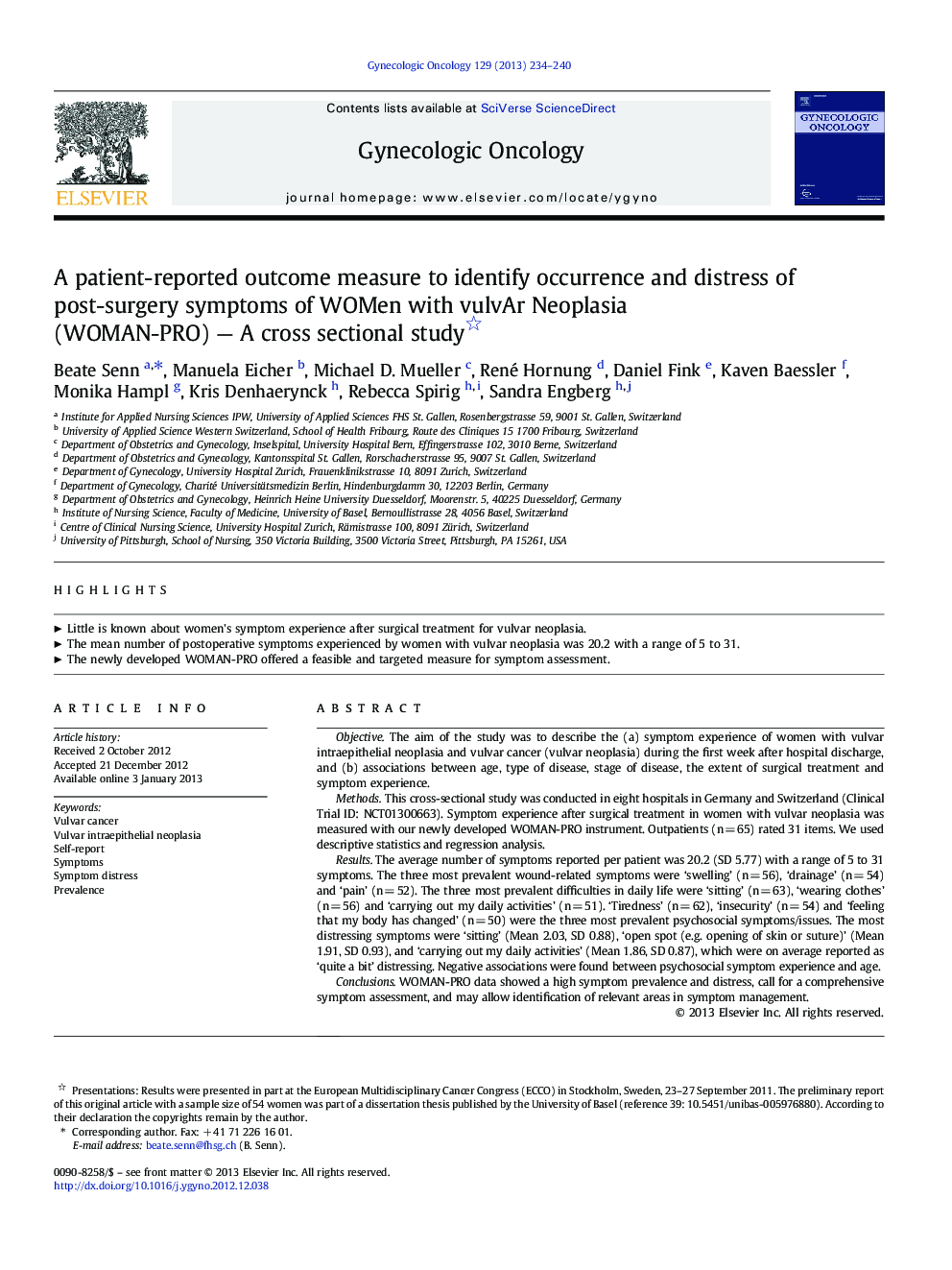| Article ID | Journal | Published Year | Pages | File Type |
|---|---|---|---|---|
| 6183863 | Gynecologic Oncology | 2013 | 7 Pages |
ObjectiveThe aim of the study was to describe the (a) symptom experience of women with vulvar intraepithelial neoplasia and vulvar cancer (vulvar neoplasia) during the first week after hospital discharge, and (b) associations between age, type of disease, stage of disease, the extent of surgical treatment and symptom experience.MethodsThis cross-sectional study was conducted in eight hospitals in Germany and Switzerland (Clinical Trial ID: NCT01300663). Symptom experience after surgical treatment in women with vulvar neoplasia was measured with our newly developed WOMAN-PRO instrument. Outpatients (n = 65) rated 31 items. We used descriptive statistics and regression analysis.ResultsThe average number of symptoms reported per patient was 20.2 (SD 5.77) with a range of 5 to 31 symptoms. The three most prevalent wound-related symptoms were 'swelling' (n = 56), 'drainage' (n = 54) and 'pain' (n = 52). The three most prevalent difficulties in daily life were 'sitting' (n = 63), 'wearing clothes' (n = 56) and 'carrying out my daily activities' (n = 51). 'Tiredness' (n = 62), 'insecurity' (n = 54) and 'feeling that my body has changed' (n = 50) were the three most prevalent psychosocial symptoms/issues. The most distressing symptoms were 'sitting' (Mean 2.03, SD 0.88), 'open spot (e.g. opening of skin or suture)' (Mean 1.91, SD 0.93), and 'carrying out my daily activities' (Mean 1.86, SD 0.87), which were on average reported as 'quite a bit' distressing. Negative associations were found between psychosocial symptom experience and age.ConclusionsWOMAN-PRO data showed a high symptom prevalence and distress, call for a comprehensive symptom assessment, and may allow identification of relevant areas in symptom management.
⺠Little is known about women's symptom experience after surgical treatment for vulvar neoplasia. ⺠The mean number of postoperative symptoms experienced by women with vulvar neoplasia was 20.2 with a range of 5 to 31. ⺠The newly developed WOMAN-PRO offered a feasible and targeted measure for symptom assessment.
